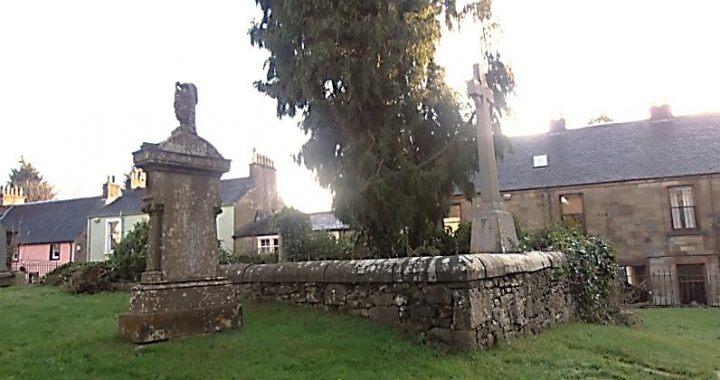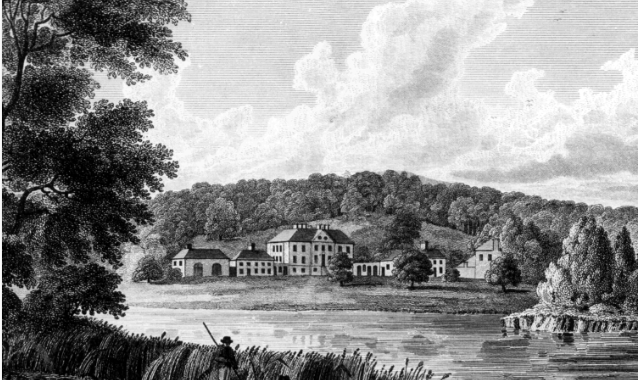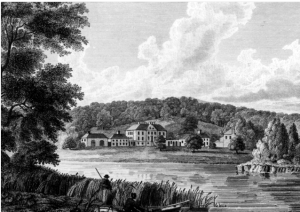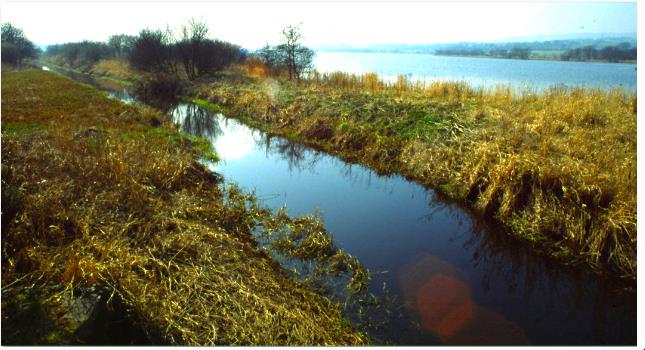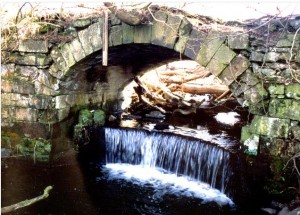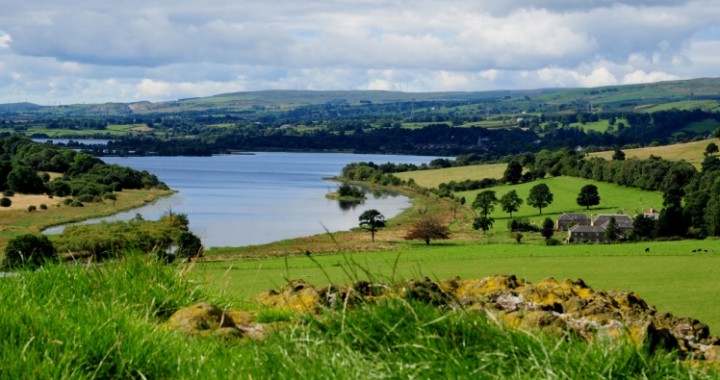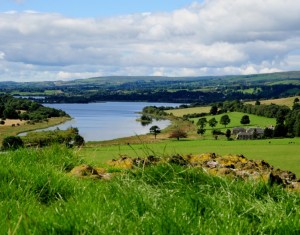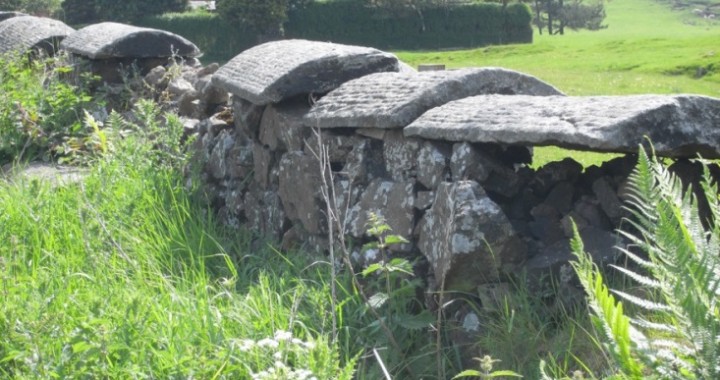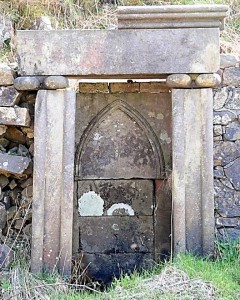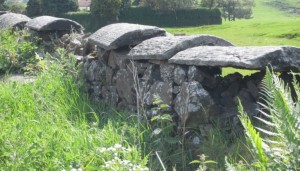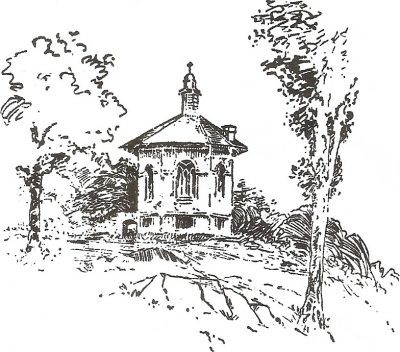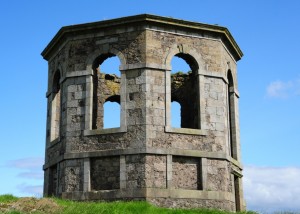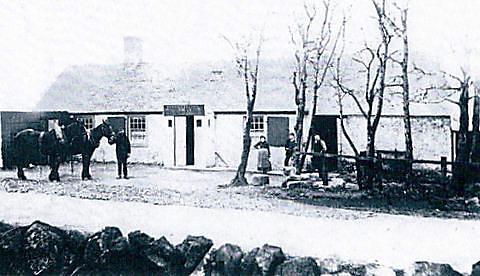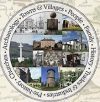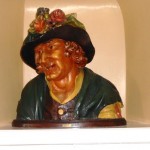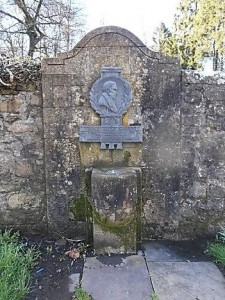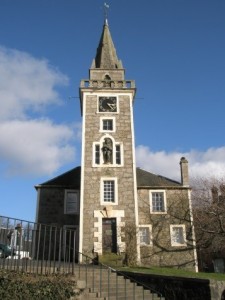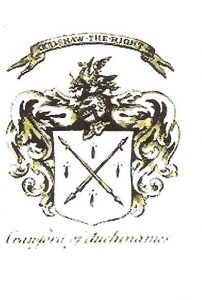 For over four hundred years the long-forgotten Barony of Auchinames, on the west of Kilbarchan village, was the property of the Crawfurds of Auchinames. Reginald Crawfurd was granted the Barony by Robert the Bruce in 1320 for his services at the Battle of Bannockburn. It remained in the possession of the Crawfurds until the middle of the eighteenth century when Patrick Crawfurd, the 16th baron, sold the barony lands including Auchinames Castle off in lots.
For over four hundred years the long-forgotten Barony of Auchinames, on the west of Kilbarchan village, was the property of the Crawfurds of Auchinames. Reginald Crawfurd was granted the Barony by Robert the Bruce in 1320 for his services at the Battle of Bannockburn. It remained in the possession of the Crawfurds until the middle of the eighteenth century when Patrick Crawfurd, the 16th baron, sold the barony lands including Auchinames Castle off in lots.
The name of the Crawfurds’ castle and barony is still preserved in the village. Today Auchinames Farm stands on the site of the castle and there is some evidence that dressed stone from the old castle was used to build walls in the adjacent fields. More significantly, the ruins of a chapel, founded by the Crawfurds and dedicated to St. Catherine, still stand in the old parish churchyard (see image above), and an old Crawfurd knight’s gravestone can still be seen in the churchyard and wall.
Thomas de Crawfurd, 3rd Baron of Auchinames, built St. Catherine’s Chapel early in the 15th century. In the Foundation Charter of 1401, it is stated that the function of the chapel was the salvation of Thomas de Crawfurd’s soul and the souls of his predecessors and successors. The patronage was to be vested in himself and his heirs, and he was required to give the rental of some of his lands for the maintenance of a chaplain ministering in the chapel. The charter was ratified by King Robert III, and St. Catherine’s Chapel was built soon after.
During the Reformation and the Dissolution of the Monasteries, the Crawfurds forfeited their chapel and chapel lands by charter. The lands were given over ‘in feu’ to laymen. Mary Queen of Scots confirmed this charter in 1565 and she ‘dispensed with the statue’. However, some years later, William Crawfurd, 9th Baron of Auchinames (1547-82), regained the endowments of St. Catherine’s Chapel, and James Chalmers, a zealous Protestant, was the appointed patron. The chapel was still upstanding in 1696 when Archibald Crawfurd, 9th Baron of Auchinames, included ‘the chappell of Saint Katharine, situat within the church yeard of Killbarquhane’ in the property he wished to leave to his heirs.
The chapel was shown as a ruin in the 1st ed. OS Map of 1856. The accompanying OS Name Book states that the walls of the chapel stood about 4ft high. The walls had been faced with dressed stone, and an iron railing placed on top. The iron railing has since been removed. The lower walls of the chapel still stand in the churchyard today as an enclosure where subsequent owners of former Auchinames lands were buried (see image above).
An old medieval knight’s gravestone, which was irreverently used as building material, can be seen in the churchyard wall on the left of the entrance pillars in Church Street. The sword on the gravestone indicates that the stone was in memory of a knight and the roundel shows two of the four spots of ermine on the coat-of-arms the Crawfurds of Auchinames. This stone must have been removed from its original burial place in either St. Catherine’s Chapel or elsewhere in the church yard, and must commemorate an early Baron of Auchinames.
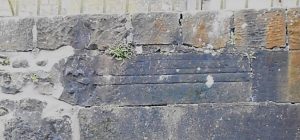
In conclusion, evidence of the Barony of Auchinames and the Crawfurds who owned it can still be seen in and around the village – in the name or Auchinames Farm; in the ruins of St. Catherine’s Chapel; and in the medieval gravestone in the Church Street wall.
© 2016 Helen Calcluth
More information on the Crawfurds of Auchinames will be available in the Renfrewshire Local History Forum Journal, No 19, due for publication in 2022.

